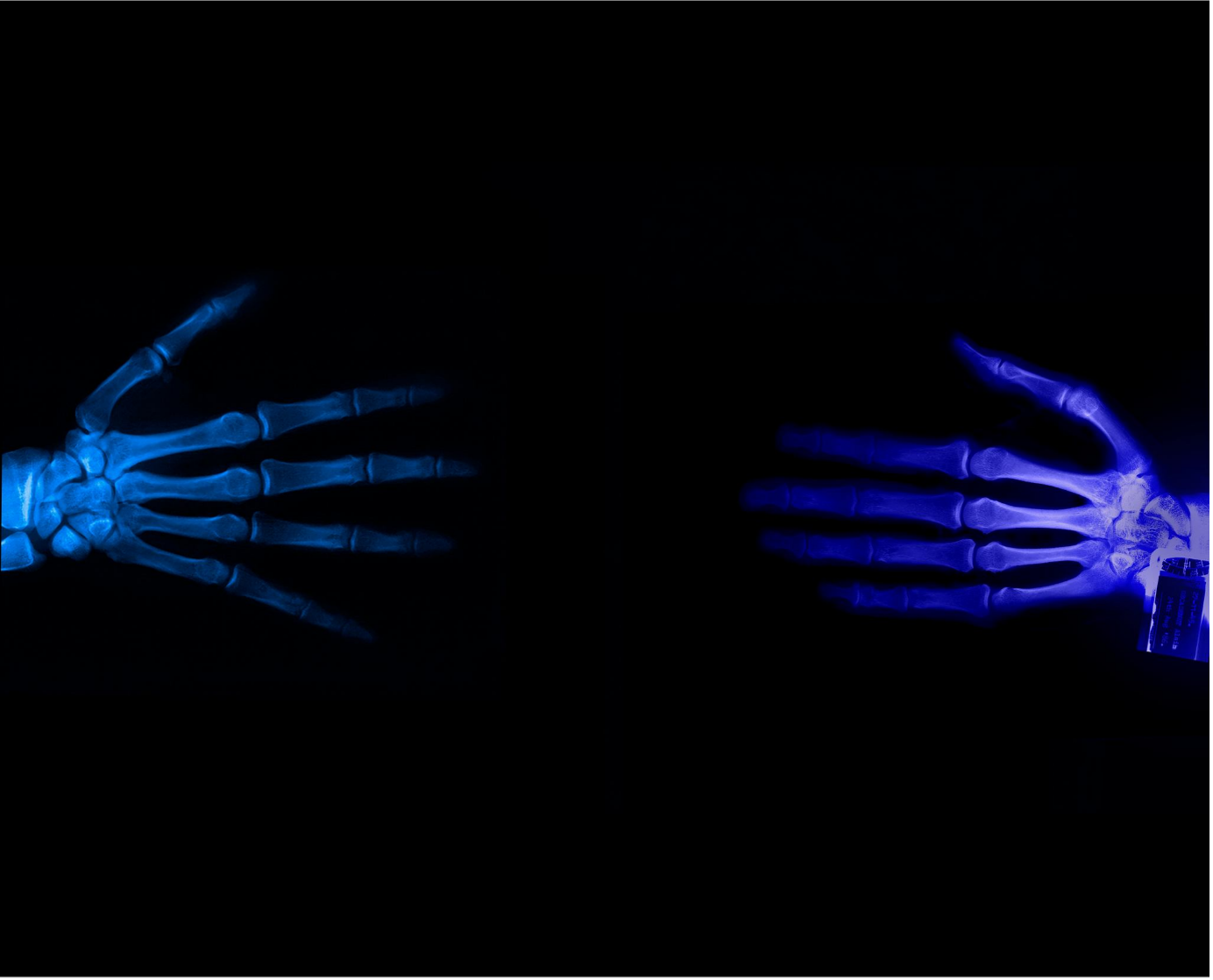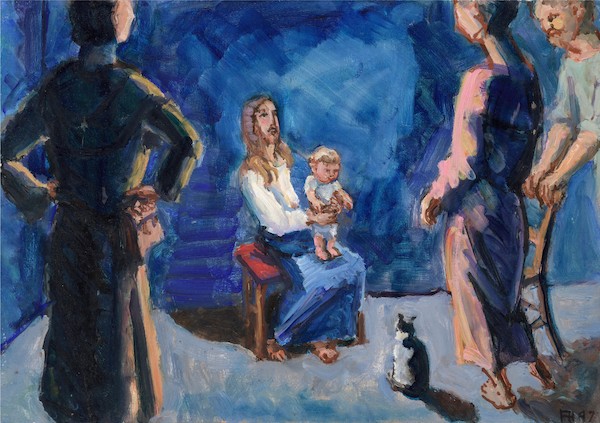There are many ways in which the return of religion, following its claimed ‘death rattle’ in the face of secularisation, has been noted within the arts. One such is the increasing prevalence of photographic series and books exploring aspects of religious practice.
Bohemia-born British-based photographer Markéta Luskačová was a pioneer in this regard. Her documentary series entitled ‘Pilgrims’, an intense study of the Christian rituals and devotions of Slovakian villagers, began as accompaniment to Luskačová’s theses on traditional forms of religion in Slovakia while at Charles University, Prague in 1967. Luskačová wanted to record the pilgrims’ way of life, because she thought that it would not survive for much longer. Similarly, the photographs of confessionals that S. Billie Mandle took over a ten-year period for her monograph ‘Reconciliation’ respond to the falling off in the practice of going to confession within Roman Catholic churches. She visited churches in small towns and large cities throughout the United States to photograph their confessionals and the images she captured show a sad neglect in spaces where the sadness of many lives is intended to find relief.
By contrast Alys Tomlinson’s prize winning ‘Ex-Voto’, a photographic series taken at the pilgrimage sites of Lourdes, Ballyvourney and Grabarka, reveals the enduring strength of pilgrimage as a human endeavour and the endurance of faith into the 21st century. Similarly, Niki Gorick’s ‘Faith in the City of London’ reveals that faith is currently alive and well in the City of London. Gorick’s endlessly fascinating book is the outcome of a project in which she documented the unique interaction between faith and commerce in the City of London.
I first met Gorick when she photographed the inaugural Mayoral Thanksgiving Service held at St Stephen Walbrook in 2015. I heard then about her plans for the ‘Faith in the City of London’ project and she returned to photograph several other services and events held in my time at Walbrook. Some of those occasions are included within this book, St Stephen Walbrook and its events being eminently visual.
Her respect for and understanding of the activities she was viewing meant that Niki gained unique access to the more than 40 places of worship - Jewish, Dutch, Welsh, Anglican, Catholic, Orthodox and more - squeezed in between The Square Mile's towers of commerce. As a result she captured the day-to-day workings of these ancient buildings and discovered the vibrant, diverse spiritual life that is current and contemporary while stretching out across many faiths.

From family weddings and the rituals of daily services, through to dramatic investitures, magnificent harvest festivals, musical events of many varieties and celebrated, popular vicars, the photographs show an extraordinary range of spiritual goings-on and charismatic personalities. Her images provide real insight into a side of London's Square Mile not dominated by money-making, where City workers are trying to connect to life's deeper meanings and where religious traditions and questions of faith are still very much alive.
The people that the churches and others faiths seek to serve are often affluent and outwardly successful, but have the same needs and anxieties as everyone else – the same longings for love, acceptance, security, and fulfilment. A rich mix of events are utilised to connect with these longings ranging from traditional choral services amidst great architecture through to Bible studies in coffee shops, while also encompassing weddings, communions, Knights Templar investitures, huge wet fish displays, and Afghan music. A great diversity of traditions are sustained alongside experimentation and the formation of new traditions, such as the Mayoral Thanksgiving Service initiated at St Stephen Walbrook. Beautifully shot, framed and documented, Gorick’s images astutely reveal and celebrate a diverse and active side of this globally important financial district which is not dominated by money-making business but, instead, by the spiritual.
That Tomlinson has found a style and audience by capturing the essence of faith in pilgrimage indicates the extent to which this spiritual practice and the devotion it evokes remains and remains powerful beneath the surface of our more secular age. Tomlinson began her project by booking herself on a 'pilgrim package' tour to Lourdes, ‘based on a curiosity and fascination to find out more about this Catholic pilgrimage site, known for its healing properties and spiritual power.’ She then expanded the project to include Ballyvourney and Grabarka, tying it in with her dissertation and MA in Anthropology of Travel, Tourism and Pilgrimage at SOAS, University of London.
The markers left behind at pilgrimage sites, the Ex-Voto of her title, became of particular interest. Tomlinson views these offerings, left by pilgrims as signs of gratitude and devotion placed anonymously and often hidden from view, as ’creating a tangible narrative between faith, person and the landscape.’ Small detailed still lives of Ex-Voto, formal portraiture of pilgrims and large format landscapes from the pilgrimage sites all feature in her series. Mike Trow, chair of judges for the Sony World Photography Awards 2018, sees the series as a sensitive illustration of the ‘idea of pilgrimage as a journey of discovery and sacrifice to a greater power’ through ‘quiet images, beautifully produced, with a calm, spiritual feel that is at odds with so much of our frenetic lives.’
Photographing from the perspective of the penitent, Mandle has created images that are more metaphorical than typological depicting the visible – and invisible – traces of people, communities, histories and dogmas. Her images speak to the beliefs that define these dark rooms and shape this intimate yet institutional ritual. Yet, the confessionals that Mandle photographed were pragmatic structures, often constructed with acoustic tiles, and more neglected than the churches themselves.

In the neglect of places and practices abandoned because of abuse, these seedy scruffy spaces that seem to share with us the shabby shame of sin, Mandle identifies the primary source of light and makes that the focus of her images. Light illumines and illuminates. In some images the light reveals the extent to which these spaces are rundown and gone to seed neglected. In others, the light irradiates the entire space transforming, changing, beautifying.
We look and look again because these images capture paradox. In Mandle’s images light reveals and irradiates these boxes which contain both abuse and absolution. The paradox they capture is the human paradox. These images examine us and our institutions. They interrogate us, posing questions about the depth of our confession and the illumination of our lives. Mandle’s confessionals are metaphorical spaces suggesting the complexities of faith and forgiveness in the 21st century.

As another acclaimed photographer of human habitats, interior spaces and urban environments Robert Polidori’s images, like those of Mandle, reflect on notions of memory and history embedded within architecture. The invitation for Polidori to photograph the restored frescoed interiors in the 15th Century San Marco Convent, as well as the building itself was inspired precisely because he believes that rooms act as vessels of memory.
Polidori visited the Convento di San Marco several times over the course of 2010 to capture the connection between the calm interior spaces of the monk’s cells and the spiritual charge of Fra Angelico’s striking masterworks, designed to augment meditation and prayer. His highly detailed, large-format colour photographs are created with long exposures and using natural light. Through their detailed command of colour, texture, light and shade, these images invoke stillness and contemplation in both the past and the present.
Tomlinson and Mandle also capture a solitary stillness and calm beauty in the faith-filled spaces and the faithful people or scenes they document. By the attention paid to their subjects their images share the same spiritual sense of contemplative stillness and silence that they first saw in the traces of those have used Mandle’s confessionals and also in Tomlinson’s pilgrims, their offerings, and the landscapes in which these are left.
Gorick says that her contact with religion had been limited and acknowledges that she had no idea at the beginning of the project of the depth and scope of the world of worship she would uncover. As a British fine art photographer specialising in images of London and Londoners for over 20 years, Gorick wonders in the Preface to the book how she had been missing all this before beginning the project. The Church itself, no doubt, has a part to play in that situation although, as Edward Lucie-Smith astutely notes in the book’s introduction, ‘the Christian faith in its Protestant form has been constantly evolving since the epoch of Wren and Hawksmoor’ and in religious, as well as purely financial terms, the City of London remains ‘a place where things begin.’

The combination of the timeless and contemporary is perfectly captured by the book’s iconic cover image showing clergy from the Two Cities on their mobile phones while waiting, in choir dress, to process into the Temple Church. It is this ability to straddle two worlds simultaneously which has led to the recent finding that, in lockdown, 1 in 4 of the population sampled an online service. Gorick’s discoveries provided her with a completely different perspective on the City of London and her hope now is that her photographs will inspire others to push open church doors and explore their spiritual nuances.
Similarly with the work of Mandle, Polidori and Tomlinson, where the beauty of their photographs, encourages us to go beyond their images by entering the history, tradition and reality of peaceful prayerfulness to which they connect.
**********
Jonathan Evens is Associate Vicar for HeartEdge at St Martin-in-the-Fields, London, UK. Through HeartEdge, a network of churches, he encourages congregations to engage with culture, compassion and commerce. He is co-author of The Secret Chord, an impassioned study of the role of music in cultural life written through the prism of Christian belief. He writes regularly on the arts for a range of publications and blogs at https://joninbetween.blogspot.com.
%20(1).png)












